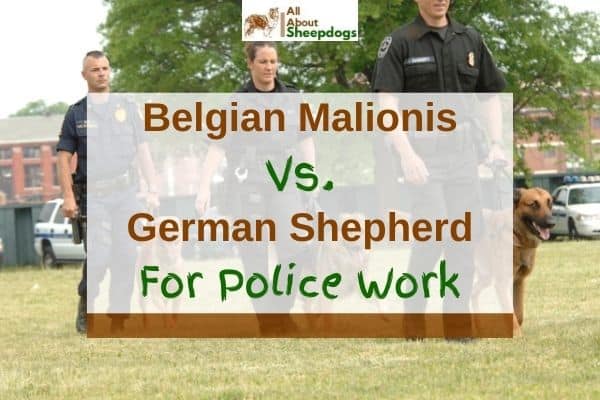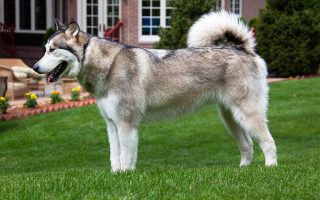For decades, dogs have been invaluable to police forces, carrying out duties diligently that no man could ever execute on their own.
The police rely on dogs to implement important functions like tracking down suspects and missing people.
They are using their powerful scenting abilities, to chase, take down and hold down criminals, and to find substances and explosives.
The types of dogs that police need for their work need to be strong and sturdy, but at the same time, fast and agile, enabling them to spring into action and run for long distances in the shortest amount of time.
Dogs that work for the police further need to be willing to work and possess exceptional endurance.
To be able to perform to the best of their ability, the police is always trying to find the perfect breed of dog with essential attributes that will perfectly suit the work they are given.
[wpsm_toplist]
Do Police Use German Shepherds Or Belgian Malinois?
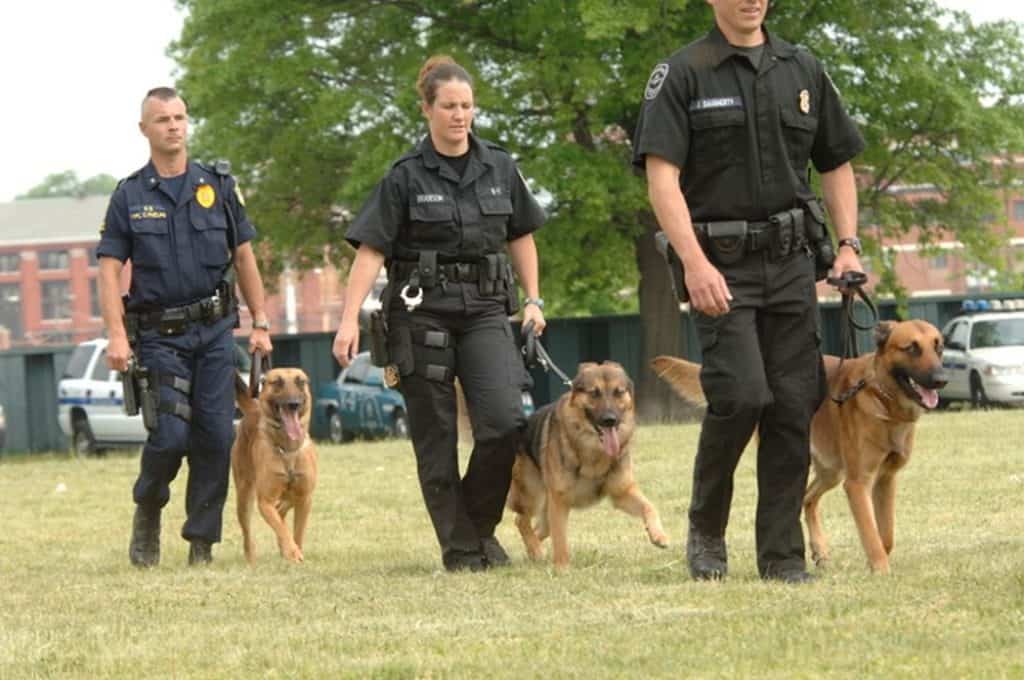
Police use both German Shepherds and Belgian Malinois for police work.
Including searching drugs, attacking on command, protection, and locating and rescuing missing people
Both dogs possess qualities that are favored and valued to the police, and come in efficient during their day-to-day duties.
These include a number of traits the dogs share, such as their exceptional trainability, intelligence, obedience, high work drive, alertness, and dutiful protection.
While in some countries the police still prefer using the German Shepherd dog, others begin to favor the smaller, lighter Belgian Malinois.
Why Do Police Use Belgian Malinois Instead of German Shepherds?
In the recent few years, many police forces, like the Los Angeles Police Department for example, have begun to choose to use Belgian Malinois to assist with their work instead of German Shepherds.
Why is that?
It comes down to a range of different reasons.
Better Physique
For instance, one reason is because the Belgian Malinois has a smaller, lighter, more athletic and agile build, and yet at the same time they possess both power and strength.
Not only does their smaller size allow them to fit through smaller places, but their athleticism, agility, and high energy allow them to chase suspects quickly and swiftly, and then take them down with their power and strength.
The marvelous agility of the Belgian Malinois allow it to cover ground in no time, and it helps them climb and jump over obstacles and walls.
This is especially important when on a trail sniffing out a suspect or a person that has gone missing.
Higher Work Drive
This dog also has an undaunted high work drive and a keen willingness to lend their service to the police as they are always eager to please.
They have great motivation and energy to work all day without tiring out and obediently follow commands that are ordered them.
Many Belgian Malinois dogs have an even more intense work drive than the German Shepherd.
They can also think and react faster, which is essential for the police that needs a dog that can work and perform tasks for hours on end.
Belgian Malinois can recover quicker after carrying out hard work than German Shepherds, and thus get back to work as soon as possible.
This is important for the police as they do not want to waste any time on important missions and tasks.
As well as that, the Belgian Malinois has outstanding scenting abilities and a higher sniffing drive.
This allows the dog to find and identify bombs and drugs with ease at places such as airports, train, and subway stations.
Better Health And Lifespan
Another reason that the police often prefer to use the Belgian Malinois is because they tend to be more healthier than the German Shepherd.
The German Shepherd type has changed drastically in the last few decades due to the fact that it is now bred more for show than for working and herding as they originally were before.
From the square, well-proportioned body that they used to have back in the 1900’s, most German Shepherds now have a slanted back which gradually slopes down, and angulated hips and hind-legs.
This makes the dog more prone to joint and cartilage distress, as well as to certain illnesses such as degenerative myelopathy, osteoarthritis, and most commonly, hip dysplasia.
Unfortunately, succumbing to one of these illnesses might mean that the German Shepherd would have to retire from their work to be able to receive the treatment they need.
Some dogs may not even be able to work anymore because of their medical circumstances.
Belgian Malinois seem to have better health overall, so they remain fitter for a longer period of time.
As well as that, the German Shepherd dog will live from 9 to 13 years, whereas the Belgian Malinois can live from 12 to 14 years, or even a little longer for some individuals.
So they can offer their assistance to the police and serve their work for a longer time.
Which One Is Better – Belgian Malinois or German Shepherd?
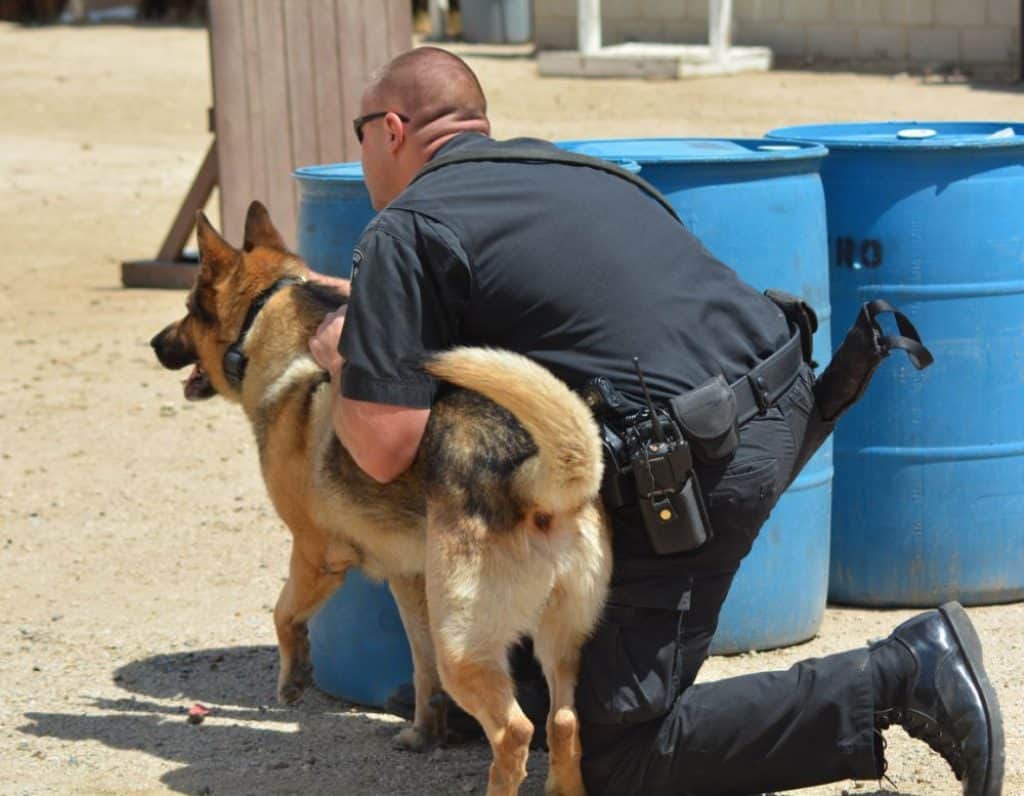
For many areas of police work, the Belgian Malinois seems to be the better dog.
He is fast, athletic, possesses unlimited energy, is extremely agile, and strong despite its smaller, lighter body.
He is not prone to as many ailments and health problems as the German Shepherd dog.
German Shepherds, on the other hand, have a more massive, powerful build, they are heavier and larger in size.
Which is better for taking down stronger and more difficult opponents, and holding them there until the police arrives on the scene.
Another factor that comes down to the question whether the fast, swift Belgian Malinois or the loyal, courageous German Shepherd is better for the police is the levels of aggression in both dogs.
The Belgian Malinois and the German Shepherd alike can be trained to show aggressive behavior toward criminals on the run, which will scare them into surrendering
But the Belgian Malinois seems to be more aggressive, which is good for the police, and for the work they are designated to carry out.
However, among pedestrians and in places where there are crowds of people, this sort of aggression may be quite a formidable problem.
Even though most police forces are choosing the Belgian Malinois over the German Shepherd nowadays, deeming it a better choice because of the smaller dog’s favored characteristics, a lot of police still stick to the larger, versatile German Shepherd.
Which Dog Is Easier To Train – Belgian Malinois Or German Shepherd?
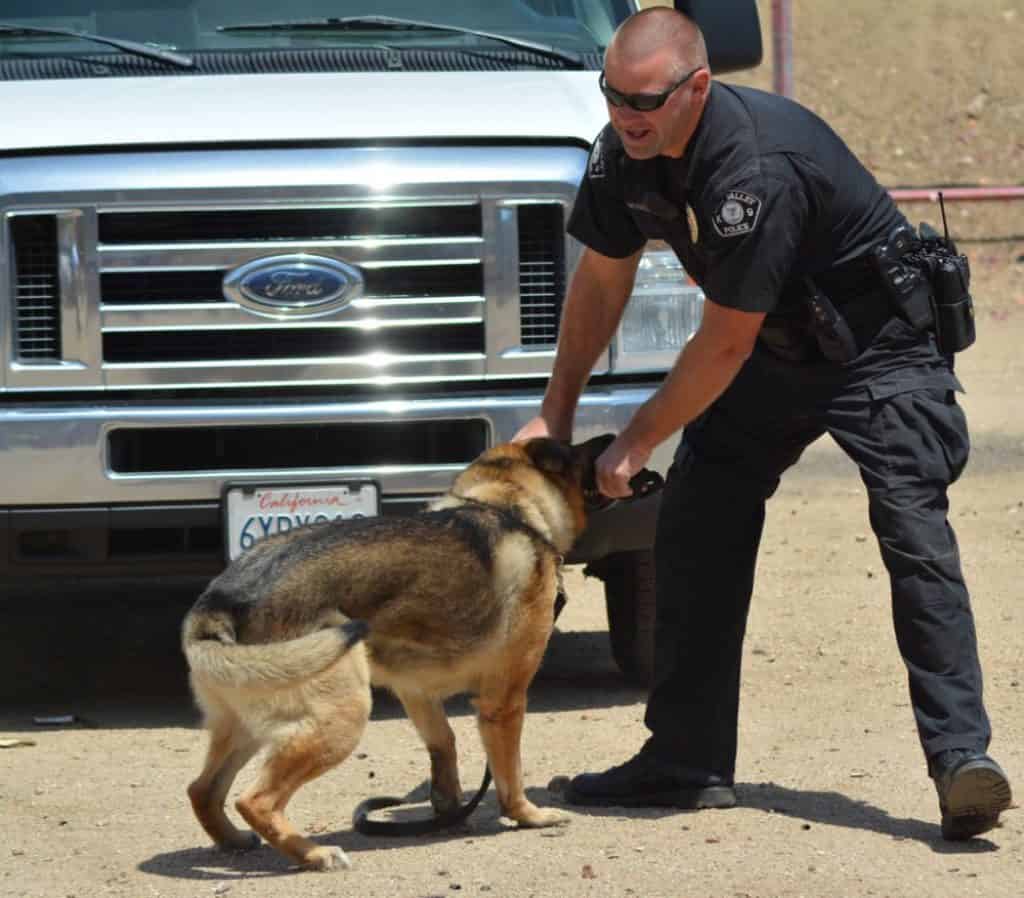
When it comes to training, the Belgian Malinois seems to be easier to train and learns at a faster pace.
Even though German Shepherds are very intelligent and trainable too, Belgian Malinois dogs are easier to control and more involved in the activity and the process of training, as they are very curious and eager, willing to please and give off their best.
Belgian Malinois dogs learn well with positive reinforcement training.
This involves rewarding the dog after they perform the desired behavior or command. so that they will be keen to repeat the action, especially when they know a reward (a praise, treat, or pet) awaits.
The Belgian Malinois can be taught many skills that are indispensable as well as crucial on a police mission.
They can learn to jump high, to clear obstacles in their way with ease, and climb different structures to either get to the other side, or escape danger.
They can be taught to use their scent to find both suspected criminals, dead bodies that the police are searching for, or for people that have gone missing after an avalanche or earthquake.
Their powerful scenting abilities are not just beneficial for finding substances or explosive material in the bags and luggage of people at airports and train stations.
They can even manage to find people buried by rocks or buried deep under the snow.
Which Dog Is Best For Police?
In spite of German Shepherds serving in the police force dutifully for a number of decades, in recent years Belgian Malinois have begun to replace them.
The Belgian Malinois dog is the best for police to use in their work, because these canines combine strength with agility and speed.
This makes chasing and taking down suspects easier, and they learn faster, think faster, and react faster.
As well as that, they are easier to train, have unlimited energy and endurance, and eagerly attend to their work for tireless hours.
They are also less prone to getting ill than the German Shepherd, and because of their smaller size, they tend to stay fitter and live longer.
Conclusion
In conclusion, the Belgian Malinois overall proves to be the best dog that the police can use to accompany them in their vital work.
These fearless, hard-working dogs have characteristics and features that make it a first-class police dog which the police can benefit from in full.
A lot of police prefer to use the German Shepherd as it suits them, as this dog also has attributes like extra strength and body mass.
However, many police forces now have decided that the Belgian Malinois offers the best service instead.

